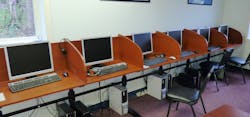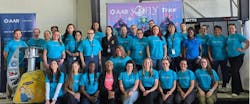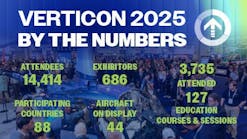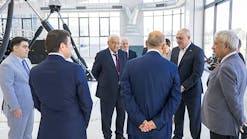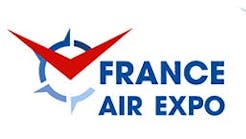Training is a fundamental activity that is essential to high performance in any organization. The basis for consistent and effective performance is a direct correlation to the training each person or organization receives. The most successful organizations train constantly.
Training starts with need. At the individual level in aviation, it’s the desire to work in a skilled environment that demands specialized knowledge. We study and attend courses to achieve competency in a field that rewards our effort with a certificate. The certificate is a sign to prospective employers or customers that we have the skills and knowledge to achieve future performance goals. We are assumed to work in a standardized way to a predictable level of competency.
Few people deny the importance of training but lament the time and effort it takes and its impact on operations. It’s a cost whose return is not well understood. In fact the most challenging aspect of training is managing it to get what you need from it.
Define the Need
The first thing is to define the need. What makes a competent employee? Everyone in a specific work group has a specific set of skills to be competent within that group. Make a list of those skills by group.
For example a list will begin with a list of qualifications;
• New hire; A&P certification; two to three years experience on fixed wing (or rotorwing)
What does he need to do his job?
1. Indoctrination training (covers company policy, facility orientation, safety policies) – four to eight hours
2. General maintenance policy and procedures - four to eight hours (logbook entries, management of deferred maintenance, etc.)
3. Type training – 40 to 80 hours classroom
4. Specific systems training – may take another 20 to 40 hours (example: an avionics course)
5. On the job training (OJT) – estimate 40 man-hours (list of specific job skills taught by a supervisor or authorized trainer)
6. Run–up/taxi – 20 hours plus 10 hours OJT for flight station training events
7. Required Inspection training – four to eight hours
Add up the hours for the scheduled training – 142 to 214 hours will be invested in training – multiply that by the hourly salary for that employee and you can see that you are making a sizeable investment. The cost can tell you a number of things and makes informed decisions about employee retention possible.
If the training is well presented and managed, the new mechanic will have a standardized skill set and can be assessed to that standard to compare his/her performance. Pay and differentials may be assessed on demonstration of skills already quantified by the needs analysis. In short, you know how good each team member is because they start from the same place and accurate comparisons can be made.
What it Costs: Needs Analysis
Training can be managed as a fixed cost per person. The needs analysis will tell you what each mechanic costs to bring into the work force. Growth and turnover can be assessed to show a budgetary metric. For example: a high turnover rate will increase not only the cost of hiring new personnel and training them but will impact consistent performance on aircraft maintenance activities due to the shift in skills capability turnover creates. In fact, those organization who place a premium in training for personnel (new hires or experienced) work very hard to keep these employees in the work force. They often tend to have the best work cultures.
Needs assessments are often done during the new hire stage and then at least yearly thereafter. In the beginning the new hire experience and prior training are compared to the list of skills created by the training organization. The differences in the current and desired skill set are recorded and will be the training plan for that person. The skill listing is a model for each job type used by the organization. Its driving goal is to give each person the necessary skills to do their work competently within the department they are assigned.
Training program policies and procedures are the formalized and accepted means that organizations design to meet desired training goals. They define instruction standards and provide recordkeeping methods used to maintain a history of training for each person. Since training requirements often change due to operations needs the training program often requires change to keep up. A way to reduce the use of formal manual changes is to utilize a course syllabus.
A syllabus is an outline or a summary of the main points of a text, lecture, or course of study. If the training program defines the syllabus as the vehicle for management of the program, it reduces the need to revise the policies and procedures to cover course details. The syllabus defines the course content, its goals, who will instruct it and the time it takes to accomplish the instruction (man-hours). It also can be used to define presentation methods, instructor qualifications and recurrency requirements. A list of syllabi will constitute the overall skills development for each person and a course is assigned to each person depending on their needed skill set. The syllabi are maintained and revised when training requirements change. The policies and procedures manage the syllabi and recordkeeping. This promotes consistency in the program while allowing the organization to adapt to new training standards required for growth or continued improvement goals.
Computer-based Training
Computer-based training (CBT) is a cost-effective way to introduce students to skills and work knowledge. It works best for small courses and recurrent training. Complex subjects may be introduced using CBT but remain better suited for formal classroom training. Web-based or computer-based courses can be managed using a learning management system (LMS). A LMS uses a software application that can schedule, record, and certify course activity as directed by the training manager.
A good software package once installed can provide an organization with flexible and cost-effective ways to communicate new knowledge and standards. It can provide a record of all scheduled training and what has been accomplished. Electronic recordkeeping is usually a key feature of the LMS further reducing labor and cost. Even classroom events may be tracked and scheduled by the LMS. Students are informed by email that a course is due and with a link to the LMS account they are able to take a required course. Upon completion another email goes to the manager that the course is completed. It can even issue a completed certificate of completion.
Some concerns about computer-based training lie in the means by which the instruction can be bypassed by the student. Certain controls need to be installed to prevent this and to assure that good knowledge transfer is taking place.
Some key controls to consider are:
• Installation of programmed learning functions that install quiz questions in the course of the instruction to assure that the student comprehends the material. The student cannot progress until all the questions are answered correctly.
• Timed view of each slide that cannot be controlled by the student. Timing each slide of a presentation sets the time for the course but also requires the student to read the text prior to moving to the next slide. In many cases the student ability to click for the next slide is inhibited to assure he or she cannot click to the end and complete the course. If the student is able to do so the course completion is void and the manager is informed that the student gets an incomplete score.
• Personnel need to have a secluded area to accomplish the course without interruptions from work environment. A computer station set aside for training often provides the student with a good learning environment. Lack of an effective learning environment hampers the intentions of the training program by increasing distractions.
• Define guidance versus training. LMS can be configured to accomplish a read and sign role to keep personnel abreast of changes or provide guidance. It can eliminate the old paper read and sign system. Without testing however, it's guidance or orientation … not training. Training requires a test and a measurement of the student’s absorption of the information presented. This should be a key attribute of the training program.
A maintenance organization that creates a plan and develops a model of competency for each mechanic or technician provides its company with a competitive edge by institutionalizing competence in the work force. It’s quality differentiation that makes the difference in marketplace competition. In creating an effective training system, an organization sets the cornerstone for its continued success.
Vern Berry began his aviation career as an A&P mechanic in 1979. His experience within the aviation industry includes key Part 119 management roles in quality and safety for air carrier operations as well as leadership roles in FBOs and large airframe MROs. He and his wife currently reside in upper state New York where he writes and manages a web based consultant firm at www.blowntireaviation.com.
